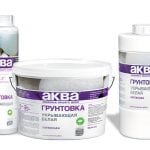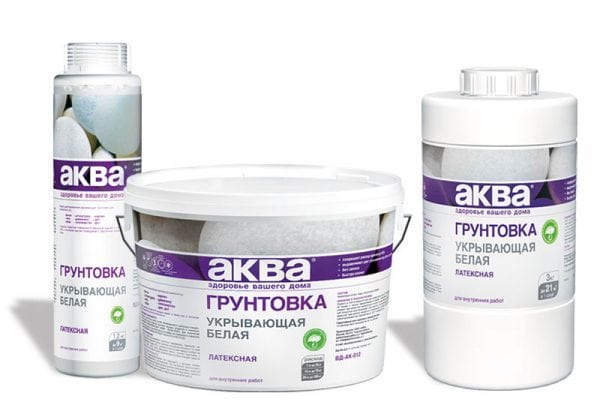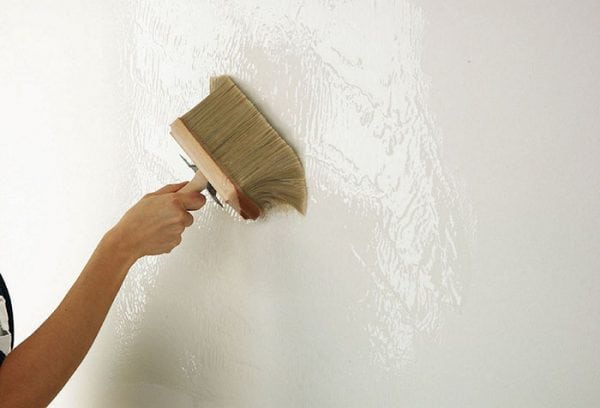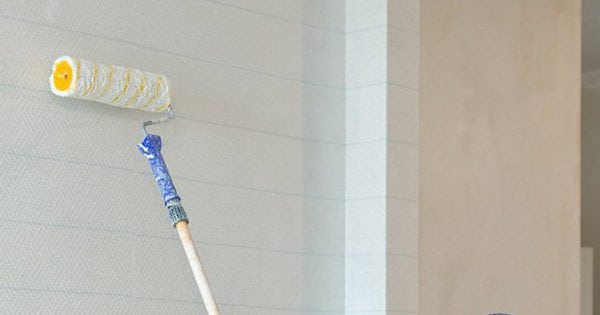For decorative walls and ceilings indoors, various materials are used. The easiest and most popular way is wallpapering. A wide assortment of these materials is presented on the market of wallpaper products: from traditional paper products to natural-based products, cullets and even “liquid” ones. A separate niche is occupied by wallpaper for painting.
In order to properly install the decorative coating, and then apply a color layer in a quality manner, you need to know and follow the repair process. Is it worth it to prime before painting, how and how to do it?
to contents ↑What wallpaper materials are intended for coloring
The use of wallpaper for interior painting, on the one hand, is very beneficial. If desired, you can always carry out cosmetic repairs, refreshing or completely replacing the color. And while this does not require re-pasting the walls with wallpaper. It is very practical and always original.
Typically, wallpaper intended for painting has a white color and some kind of texture feature. They come in different types:
- paper;
- non-woven;
- vinyl;
- cullet.
The type of base affects the durability of the finish, decorative qualities and the cost of repair. First, you need to install wallpaper materials, and this is a rather crucial stage of work. It is necessary to properly prepare the walls for pasting:
- align
- primer;
- plaster;
- to grind;
- clean from dust and dirt;
- primer again.
Only then is the installation of wallpaper materials carried out. For example, cullets are distinguished by their hypoallergenic properties. They are antistatic. And the natural raw materials used in their manufacture make the cullet non-toxic, environmentally friendly.
True, the finishing canvas is heavier than ordinary paper wallpaper, therefore, a stronger glue and, of course, a special primer are used. For heavy wallpapers, latex or acrylic primers with high adhesion are intended.
By the way, cullet does not require the application of glue on the canvas, but only on the treated surface. During operation, you must observe safety precautions - work with gloves and in long-sleeved clothing.
Cullets are a cloth of small glass threads, particles of which, falling on an open area of the skin, can provoke irritation.
to contents ↑Preparation of the glued surface for painting
Wallpaper is pasted - now you can proceed to the painting. If we have special wallpaper for coloring, do we need a primer before applying a decorative coating? Which one to use?
The paint lays on primed wallpaper materials evenly and without streaks. In addition, the intermediate solution reduces paint consumption. Manufacturers of paints and varnishes also offer a more economical way of painting wallpaper - primer-paint as a decorative coating.
Since it is recommended to paint at least in two layers, using such materials, you reduce the number of surface treatments. Instead of priming and two layers of staining, a primer with coloring and finishing fixing the color comes out.
When choosing a primer mix for wallpaper, be guided by the type of wallpaper materials, as well as the composition of the paint. Almost any primer mixture, including diluted wallpaper glue, can be used for cullet, which must be primed before painting. But usually the choice is made in favor of the composition of the topcoat: acrylic with acrylic, latex with latex or universal solution.
A primer is applied to the front surface of the wallpaper with a roller or a wide brush. Before applying, make sure that the wallpaper glue is dry. And this means that it is desirable to carry out the processing a few hours after installation or the very next day.
If you plan to continue to use a water-based or water dispersion paint, the primer should have improved moisture repellent properties.
The primer mixture itself is required:
- to improve the adhesive properties of the base and topcoat (paint);
- as additional protection for wallpaper;
- to increase the strength and durability of the finish;
- to reduce paint consumption;
- for staining without stains and stains.
We leave the processed wallpaper until the coating dries completely. You must wait at least 12 hours. Stir well before applying paint. If too concentrated, dilute.
Substances that are more liquid in consistency lie on the wallpaper with a thin layer. For high-quality wall painting, this is very important.
Experts insist that staining the wallpaper will be better if several thin layers of decorative coating are applied than one thick one. Before applying each new coat, the previous one should completely dry. The break time depends on the technical characteristics of the paintwork.
On average, wallpaper materials intended for staining withstand up to 6 cosmetic repairs. However, a large number of layers of paint over time will affect the appearance of the finish.







